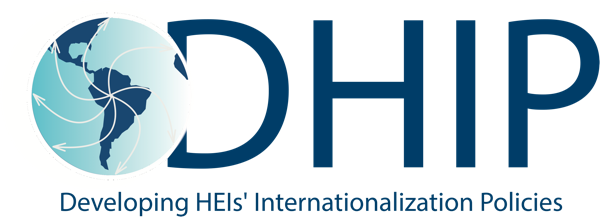The guidelines on internationalization strategies in higher education institutions
Thursday 14 October 2021A new outcome of
the DHIP project has been published: the guidelines
on internationalization strategies in higher education institutions. The
guidelines come out with the collaboration of all the consortium partners to
share the project's methodology, tools and results, making the assets available
for other institutions in Latin America and beyond. The volume builds on the
Internationalization Enhancement Plan, a flexible tool developed at the
beginning of the project, tailored on each university needs, for planning
internationalization strategies.
Starting from
the IEP strategic plans, the Latin American universities involved in the
project have implemented some practices, reported as examples, in the first and
most substantial part of the guidelines. The principles have been developed
from the examples in relation to internationalization, in a process of
abstraction and generalization that aims at making the guidelines as reusable
as possible.
Consistent with the purpose of the DHIP
project, namely to develop and integrate the internationalization dimension
into the general strategic policies of universities, the chapters in the first
part focus on topics such as the organization or reorganization of the services
provided by the international offices and the related processes, the
development of useful transversal skills for enhancing internationalization, as
well as the role of an effective
communication and networking potential, never forgetting how crucial they to foster an
international socio-cultural environment.
The main topic
in the second part is the implementation of the CLAR system. It is an
opportunity to take stock of the state of the art of the credit system in the
current debate, reaffirming its importance in supporting the
internationalization of the curriculum. The free-download Guidelines are
available both in English and Spanish.

